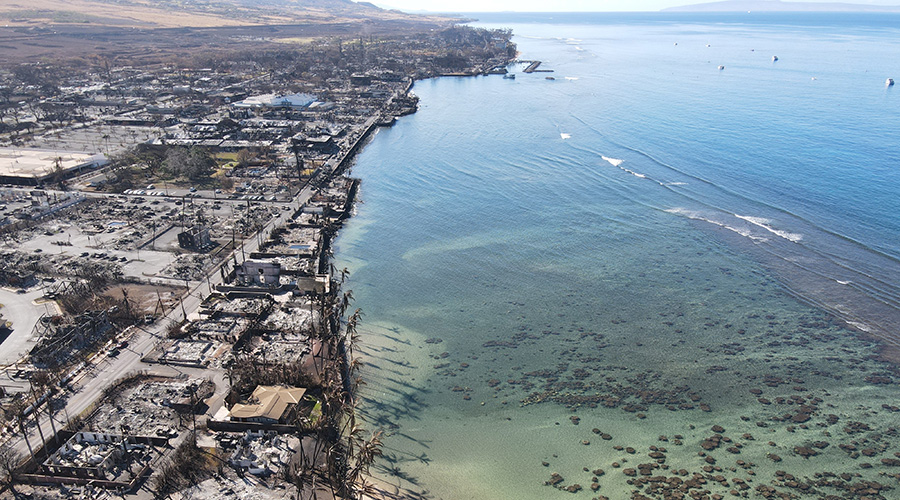Emergencies and Beyond: Planning for the Unexpected
The hurricanes that swept through the Gulf Coast in the fall of 2006 have had a major and lasting impact on the facilities that were hit by high winds and heavy rain. But the events’ repercussions have moved well beyond that region of the country.
The reports of numerous facilities caught unprepared for the storms and, as a result, without power, water, air conditioning and other necessities to cope with the emergency have prompted maintenance and engineering managers in many other organizations to revisit and rethink their facilities’ emergency preparedness, including provisions for temporary cooling.
“Anyone who has suffered through a storm is more aware of what’s going on,” says Nick Sickmen, marketing manager for Carrier Rental Systems. “They’re more concerned about how to get up and running.”
The applications for temporary cooling equipment, however, go beyond emergencies. Equipment providers point out that the technology also can help managers in other, more frequent situations, such as cooling critical equipment and areas and supplementing a facility’s existing cooling system.
Part of their challenge is getting managers to understand the availability of such options to help them. Some are farther along than others in terms of preparation.
“There are some that are really prepared, usually those who have been through a problem before,” Sickmen says. “Then there are managers who have no idea that you can rent a chiller or a cooling tower. “It’s not common knowledge. It really isn’t. It no longer surprises me to realize that.”
Understanding Options
Portable or temporary cooling systems generally fall into two categories — air-to-air systems and water-based systems.
Most air-to-air systems have a rated capacity of 1 ton or less. Managers can place a unit in a particular area of a facility, plug it into a standard electrical outlet, and position it to direct conditioning air. Condenser heat leaves the unit through a flexible duct through a window. Another option is to discharge the heat into an unoccupied space.
Larger air-to-air systems are available with capacities of up to 5 tons. Because of their size, these units generally sit outside a building. A flexible duct run through a window supplies conditioned air where it is needed. Such units require more electricity so, managers will need to provide temporary electrical service to run them.
Water-based portable-cooling systems are available in capacities up to 5 tons. A once-through water-cooling system removes heat from the unit’s condenser. A flexible hose from the building provides the needed water and is discharged in the nearest floor drain.
Even larger temporary cooling units are available that can deliver 12, 50 and even 500 tons of cooling to facilities.
Assessing the Space
Knowing equipment options is just one part of the equation. Understanding a building’s ability to accommodate temporary cooling equipment is equally important.
“It’s amazing how many professionals think they can just roll it in, plug it in, and it works,” Sickmen says. Among the issues managers must consider before agreeing to buy or rent temporary cooling equipment are these:
-
Are there water taps available?
-
Is there a power source or a generator available to run the unit?
-
Is there fuel available to supply the generator?
-
How will the building handle the unit’s condensate?
Surprisingly, many managers researching their temporary cooling options — especially larger units — haven’t considered the equipment’s space requirements.
“Most universities and hospitals haven’t thought enough about where they would put the equipment,” Sickmen says. Such considerations are more pressing in urban settings or on campuses where space already is at a premium.
The type of facility also can affect the decision to buy or rent temporary cooling equipment. For example, supplemental or temporary cooling applications can be especially appealing to businesses in leased office space, says John Dornan, manager of the heat management group with Denso Sales California Inc. It tends to appeal to such businesses because they have no control over the central HVAC system, they can use the equipment without changing the space, and they can take it with them when they move.
Knowing Needs
Whether preparing for emergencies or assessing isolated cooling problems, managers are more likely to find the most appropriate products if they first understand their buildings’ specific cooling needs.
The source of a problem can come in many different forms. Some facilities’ operations have changed since its original construction, for example.
“In the original specifications for the room, they estimated how much equipment would be in the room,” Dornan says. “But now there’s more equipment than there used to be.” Also, new equipment might be generating more heat, so the building’s total heat load continues to increase nearly unnoticed.
“You need to make sure you clearly identify what it is you’re trying to cool, whether it’s people, equipment, or processes,” Dornan says.
The first step in the process is to identify critical areas that might require air-conditioning. These areas typically include computer-equipment rooms, where the loss of air-conditioning could shut down the equipment.
Essential telecommunications equipment centers require ongoing air-conditioning to prevent damage to sensitive electronic equipment, and research facilities often have strict requirements for regulating temperatures.
For each of these critical areas identified, managers must determine the load that a temporary cooling system must meet. Compiling the loads for all critical areas will indicate the needed size and quantity of temporary cooling systems.
For especially critical areas, managers will need to dedicate a portable system for that area. For other areas, they might only need to have properly sized portable cooling systems available that technicians can move and adjust as needed.
The general rule for sizing cooling equipment is to bring in 1 ton of cooling for every 500 square feet of space to be cooled, though managers might adjust that figure up or down 100 square feet, depending on specific details of the space and the facility, Dornan says.
Beyond Emergencies
Traditionally, managers tend to think of portable and temporary cooling equipment as options in emergencies, such as hurricanes or power outages. Sickmen stresses that, while planning for emergencies obviously is important for all facilities, renting cooling equipment also can help managers address other needs.
“It’s not just for emergencies, and it’s not just for portability,” Sickmen says. “They can be temporary supplements. Such equipment can supplement existing systems, especially when it’s really hot, and not just because the power is out.”
For example, temporary cooling equipment can help managers keep operations going during shut-downs for required maintenance. Energy considerations also come into play.
“After-hours and weekend cooling is a huge part of our market,” Dornan says. Many institutional and commercial organizations are trying to save energy by shutting down or turning down their cooling systems during a facility’s off hours. But some equipment continues to run around the clock and requires cooling.
“Emergency cooling is a big part of what we do, but there are a lot of permanent applications for the technology,” Dornan says.
Picking a Partner
Once managers understand their facilities’ set-up, a particular space’s cooling needs, and their application options, the final elements in the equation involve deciding on a company to provide the equipment and selecting the equipment. How are managers choosing a partner in temporary cooling? They are using several avenues.
“The mechanical contractors out there are the key,” Sickmen says. They often have strong relationships with customers and know the buildings’ needs and limitations.
Perhaps not surprisingly, managers also are looking to the web for answers.
“Many customers are brand loyal, but a lot of them source this kind of thing on the internet,” Sickmen says. “They’ll type in a keyword or phrase, just to see what’s out there.”
Managers’ planning must account for having equipment available on site or for having contracts in place to rent a system, complete with specified delivery times in the event of a service interruption service. It’s too late to start looking to rent a temporary cooling system when the calls start coming in about the a building’s lack of air conditioning.
“Everybody says they want a formal program, but what they really want is options,” Sickmen says.
Finally, managers should be aware of one equipment trend that might affect their temporary cooling decisions. A growing number of managers are bringing in low-cost, portable units to cool very small spaces in their facilities, Dornan says. The problems with some such units — generally in the range of 14,000-16,000 Btu — are that they can have limited ducting capability and higher operating temperatures.
“People are finding out the hard way that they don’t meet expectations,” Dornan says. He recommends that managers carefully review a unit’s ratings to make sure it meets recognized U.S. industry standards.
The type and size of temporary cooling equipment that managers select obviously is specific to each facility, but one characteristic is important in every situation — the reliability of the equipment.
“Customers demand quality,” Sickmen says. “They’re already in a bad situation. They don’t want to have the equipment go down again.”
Temporary Cooling Resources
Many professional and manufacturer associations offer information on planning for and installing temporary and emergency cooling systems and equipment. They include:
-
The Air Conditioning Contractors of America, (ACCA), www.acca.org
-
The Air-Conditioning and Refrigeration Institute (ARI), www.ari.org
-
The American Society for Healthcare Engineering (ASHE), www.ashe.org
-
The American Society of Heating, Refrigeration and Air Conditioning Engineers (ASHRAE), www.ashrae.org
-
The Association for Energy Engineering (AEE), www.aeecenter.org
|
Related Topics:











